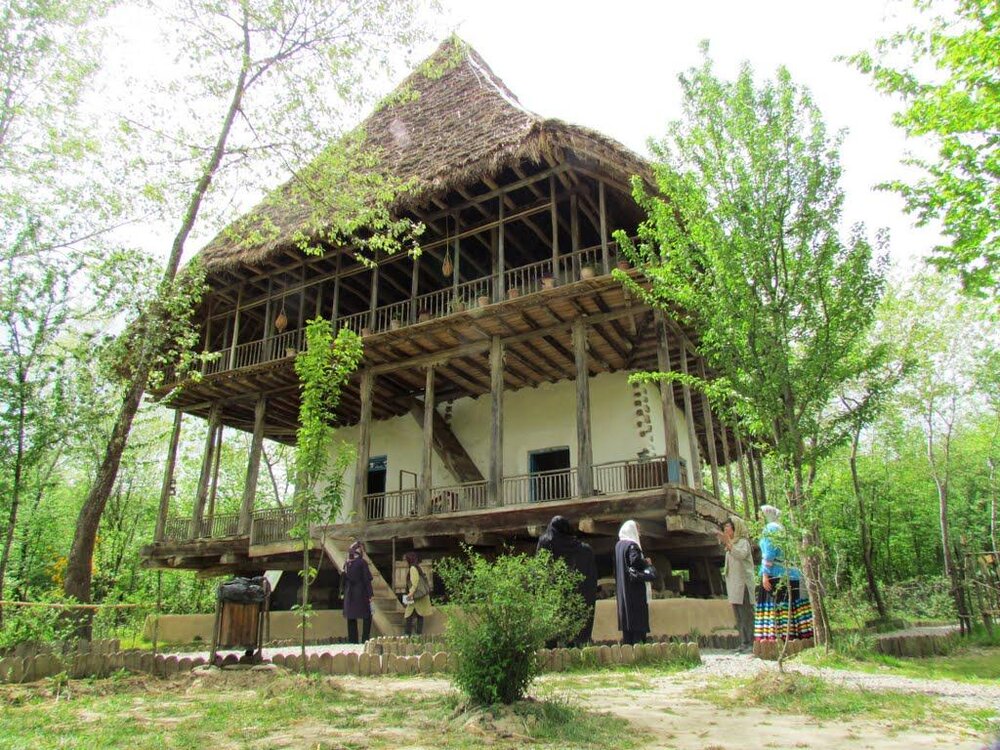Grab a slice of Iranian traditions at Gilan Rural Heritage Museum

TEHRAN - Gilan Rural Heritage Museum strives to represent traditional, cultural, architectural, and anthropological areas of the northern Iranian province.
Many traditional Gilani cottages have been reassembled on the grounds of this fascinating open-air museum in an areal of 45 hectares within the Saravan Forest Park, 18km south of Rasht (2km off the Qazvin highway).
The lush green province is known for its tourist attractions and warm-hearted and hospitable people. The people of Gilan from different ethnic groups, including Gilak, Talesh, and Tat, have come together and formed a very rich and diverse culture and customs. In recent years, the Gilan Rural Heritage Museum has been trying to bring together all the cultural diversity of the people of Gilan in a 263-hectare complex on the outskirts of Rasht, in the heart of the Saravan forest.
In this complex, separate areas are provided for restaurants, teahouses, markets, tea gardens, paddy fields, training workshops, and handicraft production. Other sections of this site also include indigenous theaters and playgrounds, agricultural and livestock research centers, architecture and anthropology research institute, children’s park, garden for growing medicinal plants and native trees, amusement camp, and two guest complexes with a capacity of 150 units of 3 to 5 people Inspired by rural architecture.
Due to its humid and somewhat hot weather, the best time to visit Gilan Rural Heritage Museum is in spring or fall. If you chose to visit it in spring, you can enjoy spring blossoms and mild weather. But in the fall you will be greeted by the color of the trees. Either way, it would be a sight to see.
If you want to know almost everything about the life of the people of Gilan, be sure to visit the Gilan Rural Heritage Museum. In this museum, you will get acquainted with the life of the Gilak family in all parts of the province and face experiences such as traditional ceremonies, authentic local clothing, food, handicraft souvenirs, and musical instruments of these people. But even if you are not interested in this kind of experience, the green and clean environment of this rural complex will be a beautiful and unique experience for you.
According to Visit Iran, the feasible studies and fieldwork for establishing a rural museum were started in 2002. including the projects of determining the location and recognizing Gilan cultural fields.
These fields can be divided into nine parts, according to the findings of these studies, based on the cultural and architectural diversity of the province and regardless of the country divisions. These fields include two main branches of the east and west each one with four coastal, plain, submontane, and mountainous subcategories.
Gilan was within the sphere of influence of the successive Achaemenian, Seleucid, Parthian, and Sasanian empires that ruled Iran until the 7th century CE. The subsequent Arab conquest of Iran led to the rise of many local dynasties, and Gilan acquired an independent status that continued until 1567.
Sophisticated Rasht, capital of Gilan province, has long been a weekend escape for residents of Tehran who are looking to sample the famous local cuisine and hoping for some pluvial action – it's the largest, and wettest town in the northern region. Gilan is divided into a coastal plain including the large delta of Sefid Rud and adjacent parts of the Alborz mountain range.
AFM

Leave a Comment